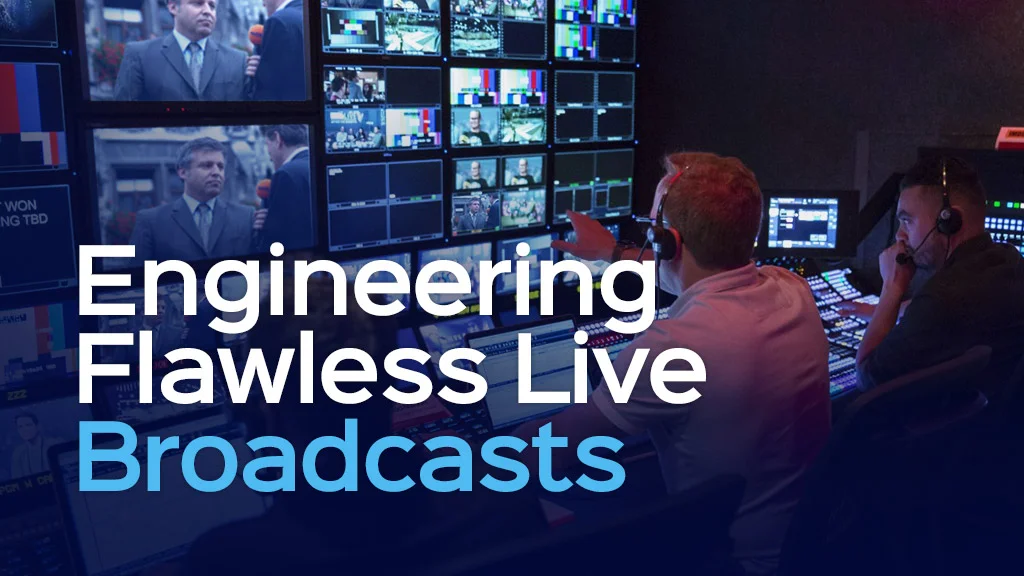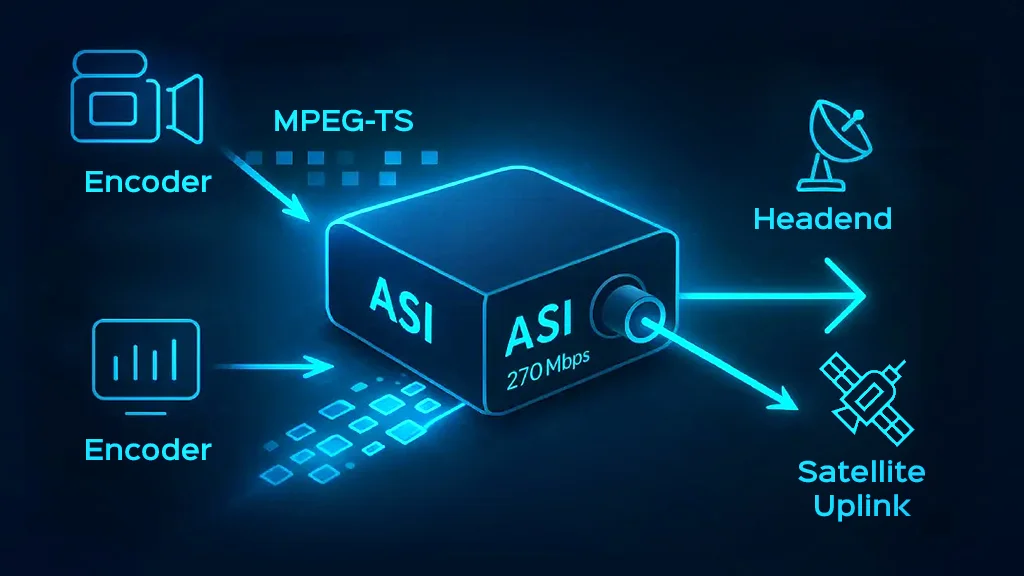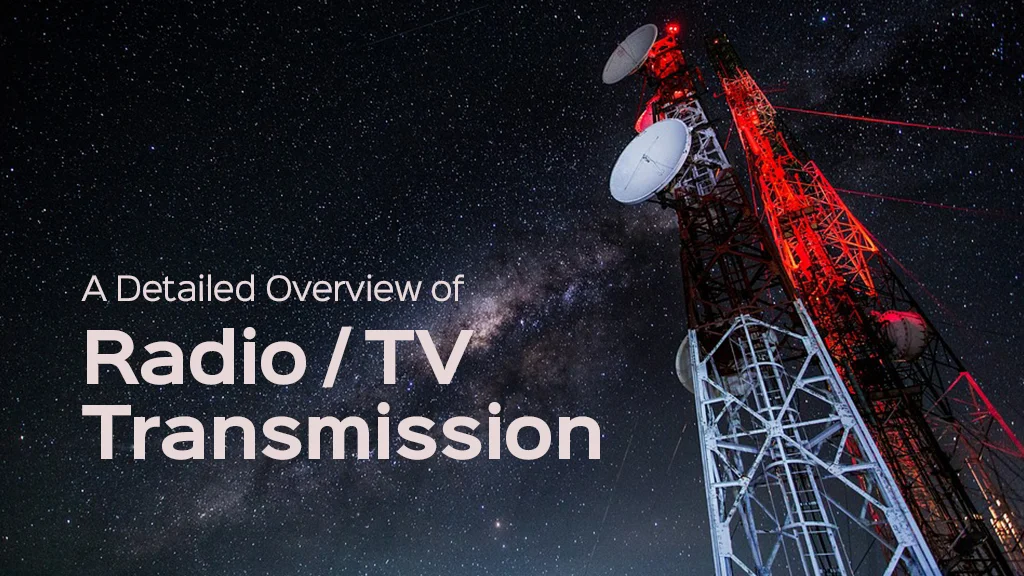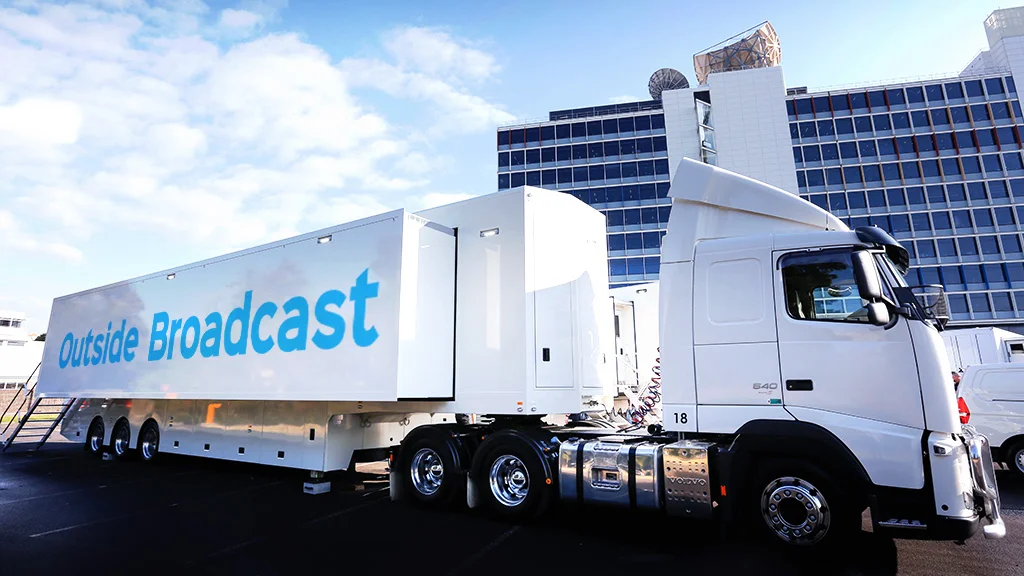
- Academy
Fiber Optic Multiplexers Explained: How They Improved AV Signal Transmission
Fiber optic multiplexers are simple but advanced devices that have transformed how audio-video (AV) signals are transmitted, offering unparalleled advantages in terms of bandwidth, signal quality, and efficiency.
This article explores how these devices work, their significant role in modern broadcasting, and the advantages they bring to various applications. By examining the key parameters and providing a guide to selecting the right exemplary multiplexer, we aim to provide a comprehensive understanding of fiber optic multiplexers and their impact on the broadcast industry.
Fiber optic multiplexers in modern broadcasting
Traditional copper cables face numerous limitations, particularly in terms of bandwidth, signal quality, and distance coverage. As broadcasters tended to high-definition and ultra-high-definition formats, the requirements for transmission systems have become more stringent.
Fiber optic multiplexers address these challenges by enabling the simultaneous transmission of multiple signals over a single fiber optic core. This technology utilizes the principles of wavelength division multiplexing (WDM) or time division multiplexing (TDM) to combine different signals, ensuring efficient use of bandwidth and minimizing signal loss.
Modern broadcasting and live event productions depend on fiber optic multiplexers to handle various signal types, including video, audio, and data. Their ability to transmit high-definition content over long distances without degradation has made them indispensable in TV stations, production studios, and outdoor events.
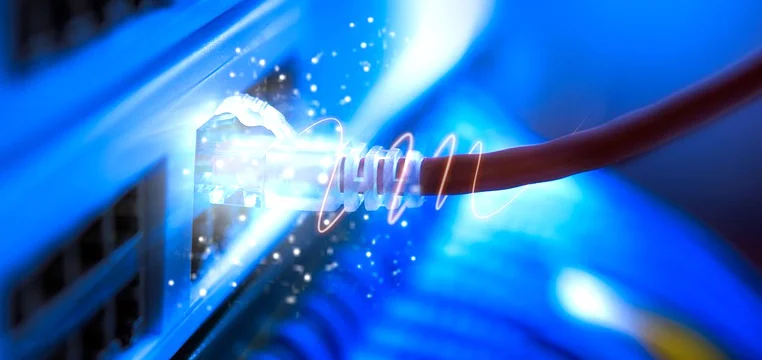
Benefits of Using Fiber Optical Multiplexers
Fiber optical multiplexers have become essential components in various industries, especially in broadcasting and telecommunications. Their ability to efficiently manage and transmit multiple signals over fiber optic cables brings many advantages compared to traditional methods. Here are some key benefits of using fiber optical multiplexers:
1. High Bandwidth Capacity
Fiber optical multiplexers can handle a significantly more significant amount of data compared to copper-based systems. This high bandwidth capacity enables the transmission of high-definition (HD) and ultra-high-definition (UHD) video signals, as well as multiple audio channels, all simultaneously without sacrificing quality.
2. Long-Distance Transmission
One of the most notable advantages of fiber optics is their capability to transmit signals over long distances without significant loss of quality. Fiber optical multiplexers can send data over several kilometers, making them ideal for remote broadcasting locations, interconnects in large facilities, and citywide networks.
3. Reduced Signal Degradation
Fiber optics are less susceptible to attenuation and signal degradation than traditional copper cables. This resilience means signals maintain their quality over longer distances, resulting in clearer audio and video transmission and fewer dropouts or interruptions in service.
4. Immunity to Electromagnetic Interference
Unlike copper cables, which can pick up interference from electromagnetic sources such as electronic devices, fiber optic cables are immune to electromagnetic interference (EMI). This property ensures that the signals transmitted remain free from noise and distortion, enhancing overall system performance.
5. Increased Reliability
Fiber optical multiplexers provide greater reliability in signal transmission. The stability of the fiber optic medium contributes to fewer errors, ensuring consistent performance and reducing maintenance costs associated with signal loss or interruptions.
6. Scalability and Flexibility
Fiber optical multiplexers allow for easy scalability as the demands for additional channels increase. Broadcasters and service providers can add more signals without needing to reconfigure existing infrastructure significantly. This flexibility enables organizations to upgrade and expand their systems efficiently.
7. Improved Security
Fiber optic cables keep your data safer than regular copper cables. They are difficult to tap into without detection, which makes fiber optical multiplexers a preferred choice for sensitive data transmissions, reducing the risk of unauthorized access.
8. Cost-Effective Over Time
While the initial investment in fiber optical technology may be higher, the long-term benefits significantly offset these costs. Reduced maintenance, lower energy consumption, and the ability to transmit more data simultaneously contribute to better overall value.
9. Simplified Cabling
Multiplexers allow multiple signals to be transmitted through a single fiber optic cable, simplifying cabling requirements. This reduction in cable complexity not only makes installations cleaner and more organized but also minimizes the physical space needed for wiring.
The benefits of using fiber optical multiplexers are clear, ranging from high bandwidth and long-distance transmission capabilities to greater reliability and security. As the demand for high-quality, efficient AV signal transmission continues to grow, fiber optical multiplexers will remain integral to modern communication and broadcasting systems, providing the necessary foundation for future advancements in technology.
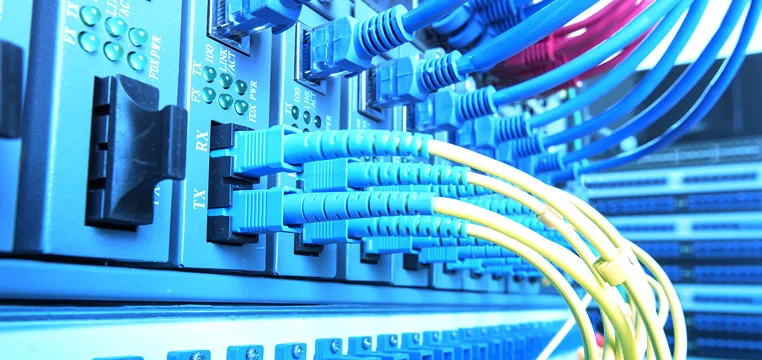
Key Performance Parameters of Fiber Optic Multiplexer
When evaluating fiber optic multiplexers, several key parameters should be considered:
1. Throughput
Throughput refers to the maximum data rate that the fiber optic mux can handle. It is typically measured in gigabits per second (Gbps) or terabits per second (Tbps). High throughput is essential for applications that require transmitting large volumes of data, such as high-definition video streams or multiple audio channels.
2. Number of Channels
The number of channels that a multiplexer can support indicates how many separate signals can be transmitted simultaneously. A higher channel count provides greater versatility and allows for efficient utilization of fiber optic infrastructure, especially in environments where multiple AV signals or data streams need to be managed.
3. Wavelengths Supported
For Wavelength Division Multiplexing (WDM) systems, the number of wavelengths the multiplexer can handle is a critical parameter. Multiplexers designed to support a broader range of wavelengths can transmit more channels simultaneously, thus increasing overall capacity and bandwidth.
4. Latency
Latency is the delay introduced by the multiplexer during signal processing. It is measured in milliseconds (ms) and is critical for applications requiring real-time transmission, such as live broadcasting or interactive media. Lower latency ensures that signals are transmitted with minimal delay, maintaining synchronization and quality.
5. Signal Integrity
Signal integrity refers to the quality and reliability of the transmission. This parameter indicates how well the multiplexer maintains the original signal quality over distance and through various network conditions. High signal integrity minimizes errors, distortion, and degradation, ensuring clear and accurate output.
6. Distance Range
The effective distance range specifies how far signals can be transmitted without significant loss of quality. Fiber optic multiplexers should be tested for their performance over varying lengths of fiber optic cabling. The longer the distance a multiplexer can handle while maintaining signal quality, the more versatile it is for different applications.
7. Power Consumption
Power consumption is an important parameter, especially for organizations looking to minimize energy costs. Efficient fiber optic multiplexers should operate with low power usage while delivering high performance.
8. Form Factor and Design
The physical size and design of a fiber mux can impact its installation and integration into existing systems. Compact and modular designs allow for easier mounting and scalability, while consideration of rack space in broadcasting centers is also key.
9. Redundancy and Fault Tolerance
Redundancy and fault tolerance refer to the multiplexer’s ability to maintain operational integrity even in the event of a failure in one or more components. Features such as dual power supplies and automatic failover mechanisms enhance system reliability, which is crucial in mission-critical environments.
10. Environmental Specifications
Lastly, understanding the operational temperature range, humidity tolerance, and ruggedness of the multiplexer can indicate its suitability for different environments, whether indoor or outdoor. Devices designed to withstand harsher conditions are particularly beneficial for remote or temporary installations.
Applications of Mux in the Broadcast Industry
Fiber optic multiplexers have become essential tools in the broadcast industry, revolutionizing how AV signals are transmitted and managed. Their ability to combine multiple channels into a single transmission medium provides numerous applications across various aspects of broadcasting. Here are some of the key applications of their in the broadcast industry:
1. Live Event Broadcasting
Fiber optic multiplexers are crucial in live broadcasting events such as sports, concerts, and conferences. They allow multiple video feeds and audio streams to be transmitted simultaneously over a single fiber optic cable. This capability ensures seamless coverage and real-time transmission of events to viewers, regardless of the complexity of the setup.
2. Studio Production
In television and film studios, multiplexers streamline the workflow by enabling the simultaneous transmission of multiple signals from different sources. This allows production teams to efficiently manage content during live shows or recordings, facilitating quick editing and mixing of audio and video.
3. Outside Broadcast (OB) Trucks
Outside Broadcast trucks rely heavily on fiber optic multiplexers to connect various equipment and cameras located far from the main transmission source. The multiplexers ensure high-quality signal transmission back to the OB truck, allowing multiple feeds to be processed and transmitted without signal loss over long distances.
4. Remote Production
Fiber optic multiplexers facilitate real-time transmission of high-quality content from remote locations to broadcasting centers. They support the unique demands of remote workflows, enabling crews to deliver programs from virtually any location while maintaining broadcast quality.
5. Contribution and Distribution Networks
In contribution networks, multiplexers are used to combine multiple signals from various sources (such as studios, remote cameras, or outside broadcasts) before delivering them to a central facility. For distribution networks, multiplexers enable broadcasters to send multiple content channels to cable operators or internet streaming platforms simultaneously, optimizing bandwidth utilization.
6. Data Transmission
In addition to AV signals, fiber optic multiplexers can transmit auxiliary data, such as monitoring signals, control commands, and telemetry. This capability improves operational efficiency by allowing broadcasters to manage and monitor equipment remotely, facilitating smoother production processes.
7. Signal Routing and Management
Multiplexers enable efficient signal routing within broadcast facilities, simplifying complex setups and reducing the amount of cabling required. They help manage different feeds from various sources, allowing for flexibility in switching and distributing signals to different locations or equipment.
8. Broadcast Facility Infrastructure
Within broadcast facilities, fiber optic multiplexer is integral to creating a multipoint-to-multipoint architecture that connects various systems, including audio and video switchers, servers, and production equipment. This infrastructure supports increased content sharing and collaboration among different departments within the organization.
Choosing the Right Fiber Optic Mux for Your Needs
Selecting the appropriate fiber mux depends on various factors:
- Channel Requirements: Assess the number of channels needed for your specific application.
- Distance: Consider how far signals need to be transmitted and choose a multiplexer that supports adequate transmission distances.
- Compatibility: Ensure that the multiplexer is compatible with existing AV equipment and protocols.
- Future Scalability: Look for devices that allow easy upgrades and additions to accommodate future growth.
- Budget: Balance the cost against the features and performance requirements to find a multiplexer that meets operational needs and financial constraints.
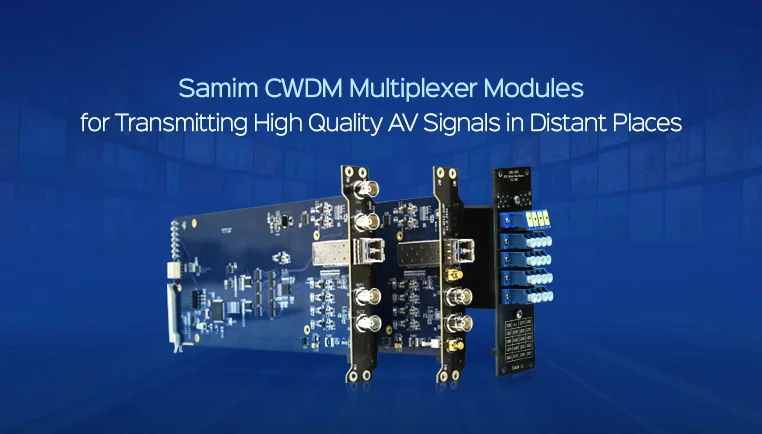
Samim Fiber Optic Multiplexer Solutions
Samim Company is a leading provider of innovative fiber optic solutions for broadcast needs, specializing in designing and manufacturing of high-quality fiber optic multiplexers. Our products are engineered to meet the evolving demands of the industry, ensuring reliable and efficient transmission of audio-video signals.
Why Choose Samim Fiber Optic Multiplexers?
1. Comprehensive Channel Options
Samim offers a range of fiber optic multiplexers that cater to various channel requirements. Whether you need a simple setup or a complex multi-channel system, our solutions are designed to handle your specific needs with ease, providing maximum flexibility and performance.
2. Long-Distance Transmission
Our multiplexers support extended transmission distances without compromising signal integrity. Samim’s products ensure high-quality audio and video signals can be transmitted over long distances, making them ideal for remote broadcasting and large facilities.
3. Seamless Compatibility
All Samim fiber optic multiplexers are compatible with a wide range of AV equipment and industry protocols. This ensures easy integration with your existing infrastructure, allowing you to make the most of your current systems without costly upgrades.
4. Future-Ready Scalability
We understand that technological needs can change rapidly. That’s why Samim’s fiber optic multiplexers are designed for future scalability. Our solutions allow you to easily upgrade and expand your system as your requirements grow, ensuring that your investment is protected for years to come.
5. Cost-Effective Solutions
At Samim, we pride ourselves on offering high-performance products at competitive prices. Our fiber optic multiplexers provide excellent value, balancing cost and features to meet your operational needs and financial constraints.
With a strong commitment to quality and innovation, Samim Group is a trusted manufacturers of fiber optic multiplexer solutions. Our products are designed to enhance your broadcasting and telecommunications capabilities, offering reliability, efficiency, and scalability.

